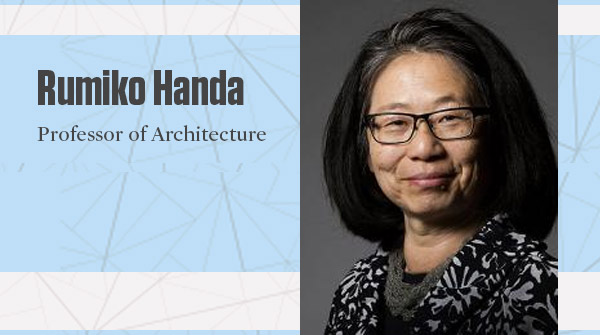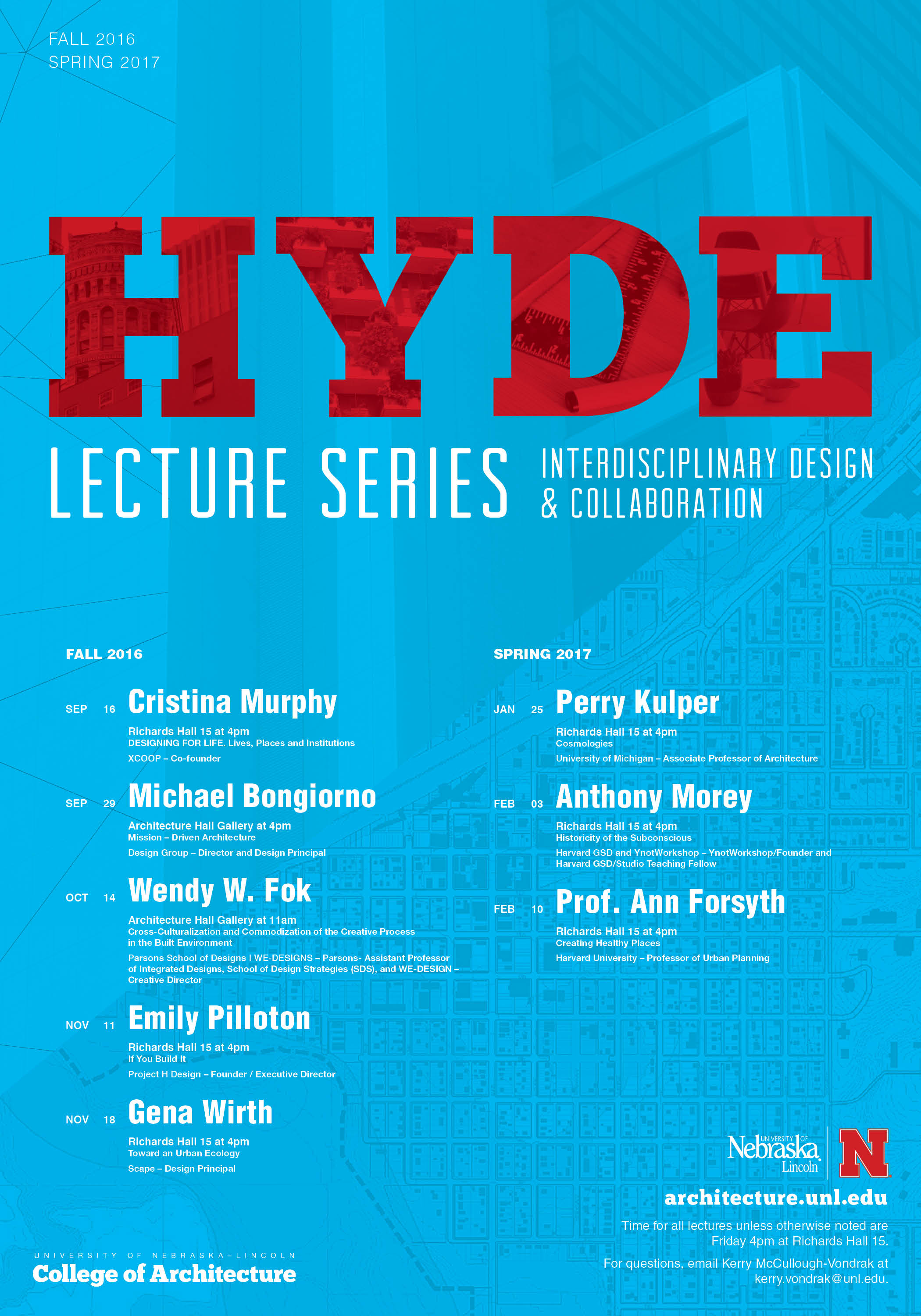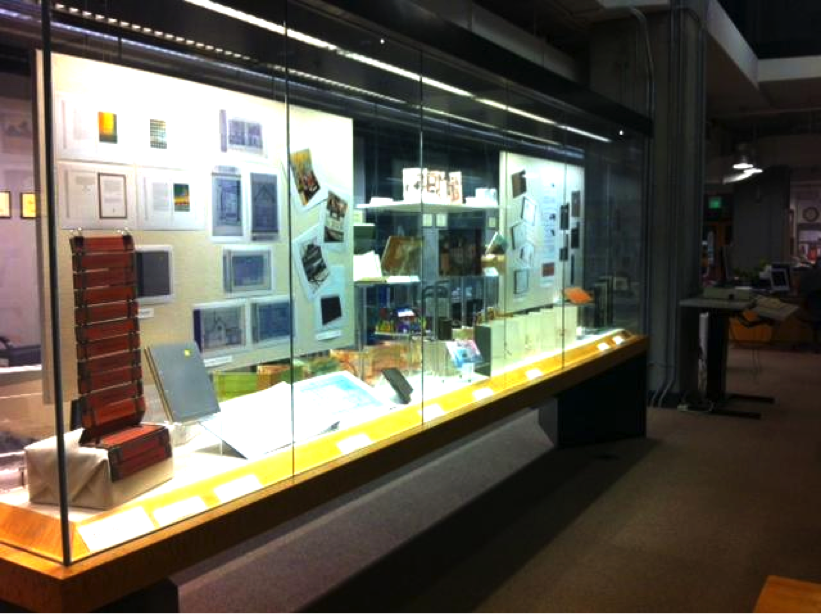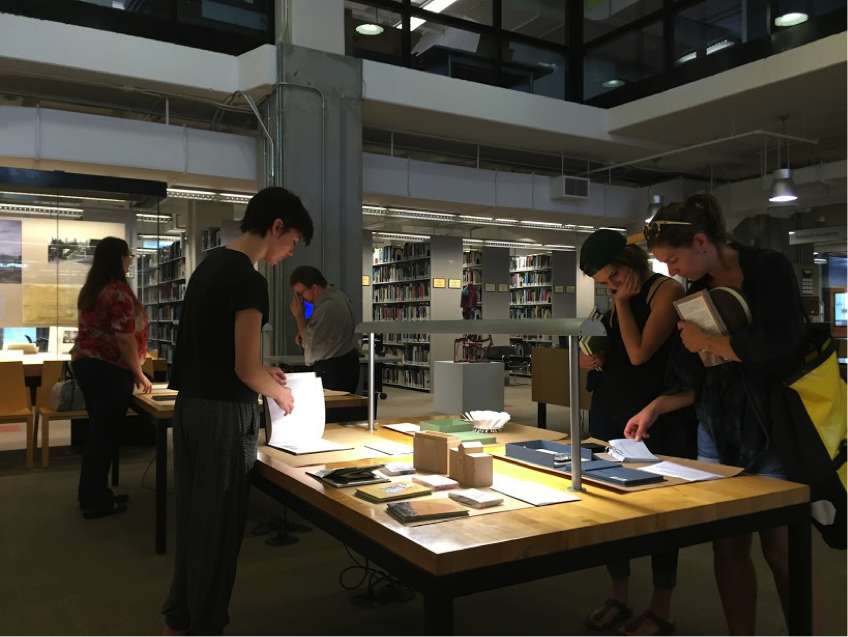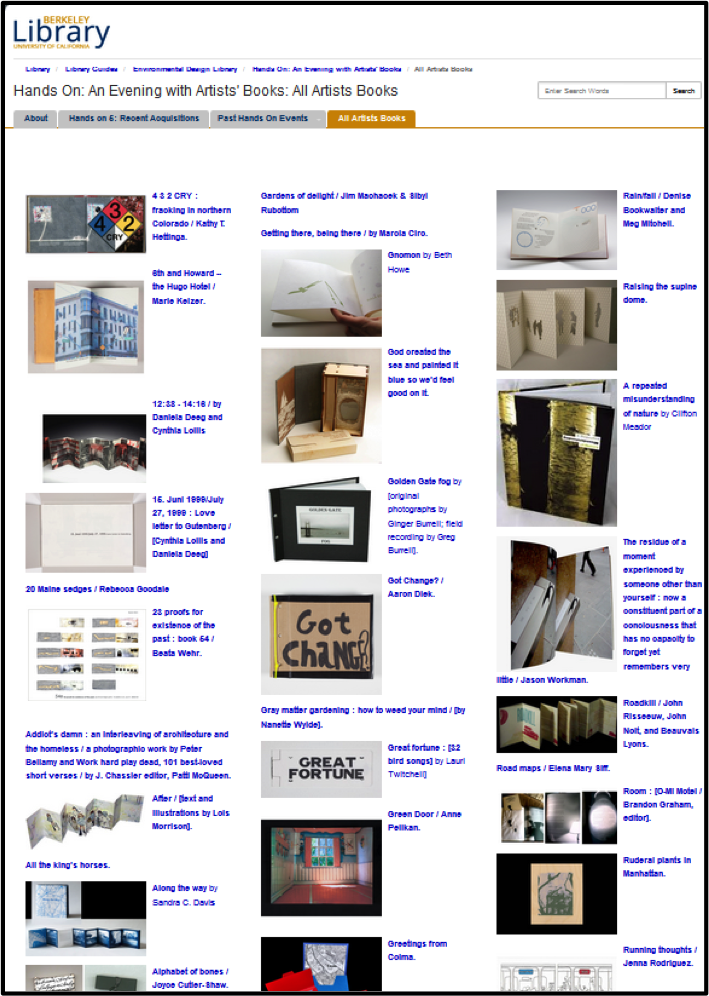Victor Regnier FAIA, has been named as Associate Dean for Research in the School of Architecture.
Dr. Travis Longcore (Landscape Architecture + Urbanism program) was an invited speaker at the California Naturalist 2016 statewide meeting, talking about his research on the historical ecology of the Los Angeles region, including the Los Angeles River and the Ballona Wetlands. He authored the chapter “GIST in Undergraduate Capstone Research Projects in Environmental Science” in the book STEM and GIS in Higher Education (Esri Press) and is co-author of the National Park Service Technical Report “Artificial night lighting and protected lands: Ecological effects and management approaches”and of the paper “Predicting spatial extent of invasive earthworms on an oceanic island” in the journal Diversity and Distributions. He is also co-investigator for a USC Zumberge interdisciplinary grant to investigate landscape conditions, genes, and growth traits of chickpeas to help develop better strains of crop plants for the future.
Mario Cipresso is designing a new medical education building for the University of Nevada, Las Vegas along with an associated masterplan on the Shadow Lane campus which lies to the west of the Downtown area in the Medical District.
Brendan Shea’s proposal for the cityLAB L.A., Times Ten competition was selected for further development. The project, How To Level A Foundation, will be featured in the first A+D museum show of 2017.
Kyle Konis, Ph.D, AIA was recently invited to speak at the 2016 DIVA Day Symposium hosted by the University of Toronto on the topic of simulation-based metrics for circadian effective daylighting design. Konis recently joined the editorial board of TECHNOLOGY | ARCHITECTURE + DESIGN. TAD is a peer-_reviewed international journal dedicated to the advancement of scholarship in the field of building technology, with a particular focus on its translation, integration, and impact on architecture and design.
Esther Margulies, Assistant Director of the Master of Landscape Architecture and Urbanism at USC and Co-founder of the LA River Art Project, co-produced The Course of Empire 2016 by Tim Durfee as part of the 10th annual Frog town Artwork in September.
Associate Dean Gail Peter Borden, FAIA has a solo exhibition entitled “Controlled Objects” opening at Galleri Urbane (www.galleriurbane.com) in Dallas, Texas on September 10th running through October. The show displays works emergent from their premise of making as the systematized engagement of a process with a material. The resulting objects are functional adaptations, not quite fully products but also not quite fully art, remaining in a liminal state of definition. As spatial lures they engage pattern, perspective, material, and process to create effect.
Hraztan Zeitlian’s Hollywood Hills Residence was published on Architectural Record Online: http://tinyurl.com/h7s4a9w
Geoffrey von Oeyen served as a moderator for the USC American Academy of Architecture (AAC) 2016 Symposium on July 30, 2016, in Shenzhen, China, titled “Rural-Urban Re-Inventions: Bridging the Gap Between China’s Cities and Countryside.” Panelists included USC’s Gary Paige of gp/s in Los Angeles and Xu Tiantian, principal of the Beijing firm DnA. The event was organized by USC AAC director Clifford Pearson. Von Oeyen also led student site tours and design discussions about a pavilion he designed to be built in the agricultural landscape outside of Xi’an, China.
Lorcan O’Herlihy, FAIA, delivered the keynote speech at Perspective USA in New York, hosted by the Italian architecture magazine The Plan. In addition, LOHA was recently commissioned to design an arts and culture campus for Dabls’ African Bead Museum in Detroit. To support this project among other Detroit-based ventures, LOHA has opened a satellite office in the Chrysler House in Downtown Detroit. LOHA’s SL11024 has been nominated for the Beazley Designs of the Year from the Design Museum in London and will be featured in their upcoming exhibition. In addition, LOHA’s restoration and modernization of Julius Shulman’s former home and studio was honored with a Design Award from the AIA California Council chapter.
This summer, Assistant Professor Alison Hirsch was a Distinguished Panelist at the Landscape Architecture Foundation’s “The New Landscape Declaration: A Summit on Landscape Architecture and the Future” in Philadelphia. She was moderator of the discussion “How Participatory Design is Changing Los Angeles,” an event organized by the California Historical Society. She is co-chair of the upcoming conference, “Landscape Architecture as Necessity,” taking place at USC on September 22-24 (http://landscapeasnecessity.uscarch.com).
Mina Chow is locking picture this month for her documentary “FACE OF A NATION: What Happened at the World’s Fair?” She has raised over $300,000 for this story about American architects, engineers and designers showing the best of America.
Tigran Ayrapetyan was promoted to Adjunct Associate Professor at USC School of Architecture.
Jose Sanchez was awarded the “Best Gameplay” award in the Games for Change festival in New York, with the Block’hood project. He will also be doing a keynote lecture in London for PACT, alongside Patrik Schumacher and Mario Carpo.
Christine Lampert, Senior Associate Director of Architecture for Hong Kong based UDP International Ltd. Just finished the Master Plan of the National City Waterfront Project for the Port of San Diego.
Just released Architect Magazine Top 50 USA Firm Rankings.
USC Faculty member Lawrence Scarpa’s firm Brooks Scarpa was ranked the 9th overall Architecture firm in America. They were ranked 4th overall in Design and 17th in Sustainability. More here: http://www.architectmagazine.com/architect-50/2016/
Assoc Professor Chuck Lagreco is taking his 5th year studio to San Francisco this Fall semester to visit their studio project site.
Assistant Professor Victor Jones will present the exhibition Infrastructural Etiquette in the SCI Arc Library from October 7, 2016 to December 4, 2016. The exhibition features drawings and artifacts alongside photographs by renowned architectural photographer Hélène Binet of the Basento Bridge (1966-76) by little known Italian structural engineer Sergio Musmeci and his partner, architect Zanaide Zanini.
Rob Ley Studio recently won a competition for 6,000 s.f. art facade for the Martin Luther King Hospital, in Willowbrook, CA. Construction begins January, 2017.
Gary Paige designed and co-curated the USC American Academy in China (AAC) exhibition, “Rural-Urban Re-Inventions” this summer. Comprised of work from 18 architectural schools and practitioners from China, USA, and EU, it was the inaugural exhibition for the newly established Shenzhen Public Art Center. Paige participated in the 2016 USC AAC symposium “Rural-Urban Re-Inventions,” presenting work from Project Lushan, a collaborative design research project between the USC School of Architecture, AVIC Legend, Ltd. and, gp/s.
Jennifer Siegal, Adjunct Associate Professor, is the new CDO for Wildernests based out of Venice, CA. Wildernests is building the world’s first self-sufficient, transportable, luxury living space. She will be lecturing Fall 2016 at The University of Minnesota; Hobart and William Smith Colleges (her alma mater); and at Dwell magazine’s PreFab Summit.
Two of Alexander Robinson’s projects and an accompanying short essay were recently featured in Sci Arc’s online magazine Off Ramp 11. Also the book, Innovations in Landscape Architecture, containing this chapter “An Interface for Instrumental Reconciliation” edited by Jonathon R. Anderson and Daniel H. Ortega and published by Routledge in now in print and available as an eBook.
Laurel Consuelo Broughton was interviewed for Attention #3: Keywords Postmodernism, Princeton School of Architecture’s audio journal for Architecture. The catalog for Errors, Estrangement, Messes, and Fictions curated by Hadrian Predock at All Gallery/USC School of Architecture was released and includes the work of Laurel Consuelo Broughton/WELCOMEPROJECTS, First Office, and Andrew Kovacs.
Diane Ghirardo gave the keynote address entitled “Architecture and Education” at the annual EAAE meeting in Delft, Holland, on 1 September. Her most recent publications include “I gioielli sacri di Lucrezia Borgia,” in the Spanish journal, Revista Borja. Revista de l’Istitut Internacional d’Estudis Borgians.
Lawrence Scarpa served as a juror for the 2016 Wood Council Awards and the Home Matters Design Competition. He also juried the first ever Latin America Solar Decathlon in Cali, Columbia. He continues to serve on the selection committee for Enterprise Community Partner’s Rose Architectural Fellowship. He recently gave lectures or presentation at the 2016 Dwell on Design Conference, UNLV, Virginia Tech, the 2016 PLEA Conference, 2016 AIA California Council Now Next Future Conference, the Hopscotch Design Festival in Raleigh, NC and Florida Atlantic University. Mr. Scarpa also received the 2016 AIA California Council Lifetime Achievement Award. His article titled, “Science is not Enough” was published in the European Union’s Council on Energy journal Photovoltaics. His firm Brooks + Scarpa also opened an office in Ft. Lauderdale, Florida and is working on projects with the City of Miami Beach, City of Pembroke Pines and other private developers.
James Steele received acceptance of two papers in 2017, for an upcoming IASTE conference in Kuwait next December and a National Built Heritage Forum in Riyadh in April. Steele just completed the second, full semester Foreign Studies Program in Brazil which ran from mid- May to mid- August, and included Mexico City, Teotihuacan Mayan sites in the Yucatan, Cuzco and Inca sites /Machu Picchu Peru, São Paulo, Brasilia, Ouro Preto, Belo Horizonte and Rio de Janeiro ( plus the Olympics!) in Brazil. The students worked with Brazilian counterparts at Universidad São Paulo on a community serving (favela) project in the post industrial Mooca district of the city and also participated in a furniture Workshop, designing a chair at FabLab. Steele is now in the midst of a Fulbright grant for the Fall ’16 term at the University of Malaysia, researching traditional Minangkabau and Malay mosques and houses in the village setting, which will include a two week field trip to Bandung Indonesia. He just received word that his book, “Contemporary Japanese Architecture: Tracing the Next Generation” went into production at Routledge/Kegan Paul, scheduled for a Spring release.
Assistant Professor Alvin Huang, AIA and his firm, Synthesis Design + Architecture have been honored with the 2016 Presidential Emerging Practice Award by the AIA Los Angeles. The award is the highest honor that the American Institute of Architects Los Angeles bestows on an emerging architecture firm for consistently producing innovative architecture. Earlier this summer Professor Huang gave presentations on his work at the AAVS Shanghai Urban Formations Symposium hosted by the Architectural Association in Shanghai, China and at the ACSA International Conference hosted by the Association of Collegiate Schools of Architecture in Santiago, Chile.
Patrick Tighe Architecture named Top 50 architects (for design) by Architect Magazine. A new monograph of the work of Tighe entitled, Building Dichotomy, with an intro by Thom Mayne was recently released. Tighe’s “Spray on House” received an R + D Award, published in Architect Magazine. His project “L’Apertura, 7 windows for Venice,” an installation for the Venice Biennale, was published in Interior Design Magazine.
Karen Kensek and Douglas Noble received a CCAIA Presidential Citation in August 2016: “In recognition of your efforts as a team to create three outstanding programs that support and encourage AIA participation and membership: the NotLY licensing program, the Facade Tectonics Institute, and the annual USC BIM Symposia. For the NotLY program (an acronym for Not Licensed Yet) you have encouraged, inspired and cajoled nearly 100 architects and engineers to become active volunteers to prepare and present architecture licensing preparation classes. Your efforts have resulted in nearly 500 free classes in Southern California, with more than 20,000 participants from 2008-2017. The Facade Tectonics Institute has become a global resource for research and education related to the building enclosure, while the USC BIM program is the outgrowth of more than 20 years of leadership of the AIA Los Angeles Computer Committee. The BIM and facades programs together have been the source of more than 30 conferences emphasizing bridging university research, professional practice, and the value of membership in the AIA. These efforts have resulted in touching many hundreds of participants and many dozens of publications, advancing the arts and sciences of BIM and facades.”
Chu+Gooding Architects (Rick Gooding) recently completed the Interior Renovation of 4 floors Hoffman Hall for the USC Marshall School of Business which included 50 Faculty Offices, 60 PhD Offices and ADA upgrades to the 8-Story Concrete Tower originally designed by I.M. Pei in 1965. C+G also recently completed a 100,000 sf Museum Storage facility in Burbank and renovated 20,000 sf of galleries in Griffith Park for the Autry Museum of the American West. C+G is currently working on renovations to some of the concessions buildings at the Hollywood Bowl.
Ken Breisch has been promoted to the rank of Associate Professor. He has stepped down after serving two years as the President of the Society of Architectural Historians, and has been appointed Chair of the jury to select its 2017 Film and Video Award. He is also a member of the team that is receiving a California Preservation Foundation Design Award for the rehabilitation of the Santa Monica Shotgun House, which will serve as the Preservation Resource Center for the Santa Monica Conservancy.
The Tenth Annual USC BIM Conference hosted well over 400 people and sold out in less than two weeks. Karen Kensek founded this program, and has led the growth of the USC BIM symposia to the point where the events no longer fit in the USC School of Architecture facilities.
The Façade Tectonics World Congress will be held October 10-11, 2016 in Los Angeles. Almost 100 speakers were selected by a blind, peer-review committee of 300 members. Façade Tectonics is in its ninth year, having held more than 20 conferences and forum events.
USC doctoral candidates Ed Losch and Andrea Martinez completed their final Ph.D. requirements and were granted degrees in 2016.

 Study Architecture
Study Architecture  ProPEL
ProPEL 